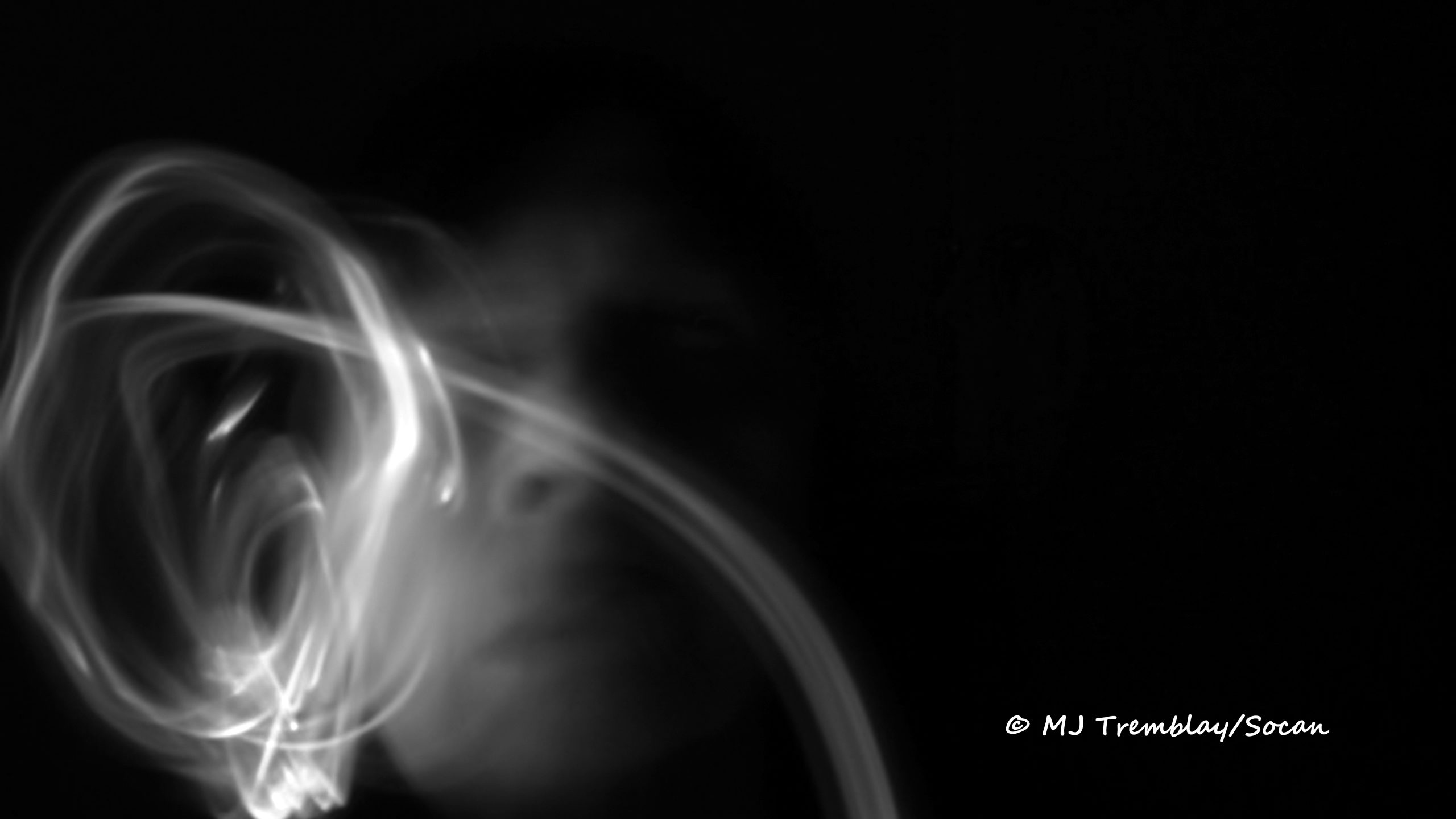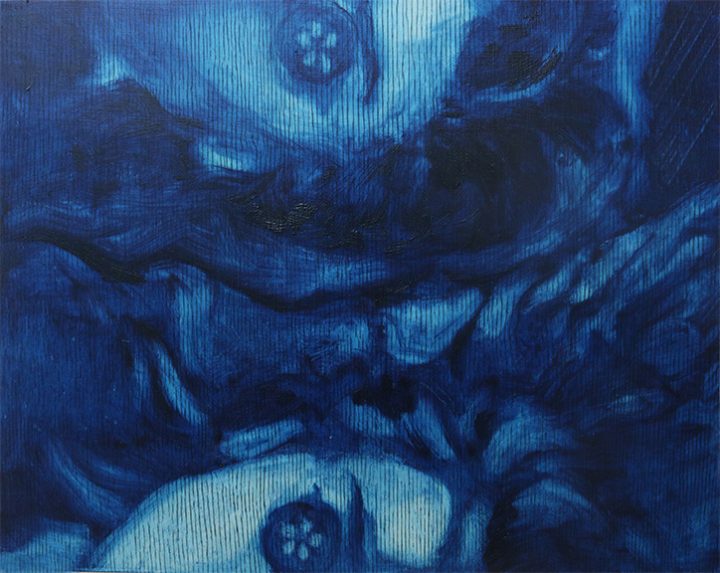
Souvenirs to Nowhere. 19 © Naghmeh Sharifi (Oil on Panel, 8″ x 10″), 2020, created as part of the Phi Centre’s Parallel Lines Virtual Residency
When interviewing artists after they have completed a certain project, there’s always the feeling that everything they wanted to say has already been conveyed with brushes, paint, chisels—or the keys of a piano. The famous cliché that “writing about jazz is like dancing about architecture” haunts the conversation.
Indeed, Naghmeh Sharifi, who happens to be an extraordinary writer as well as a painter, began the interview with the disclaimer that once she articulates something visually, it is harder to express herself in other ways.
Yet the curiosity to learn about what it’s like to participate in a site-specific residency in the time of the pandemic (when the site is one’s home or studio) yielded precious and intelligent insights about her own experience of this shared, global context.
The work displayed in this issue was created in the context of The Phi Centre’s Virtual Artist Residency entitled Parallel Lines: https://phi-centre.com/en/post/en-parallel-lines/
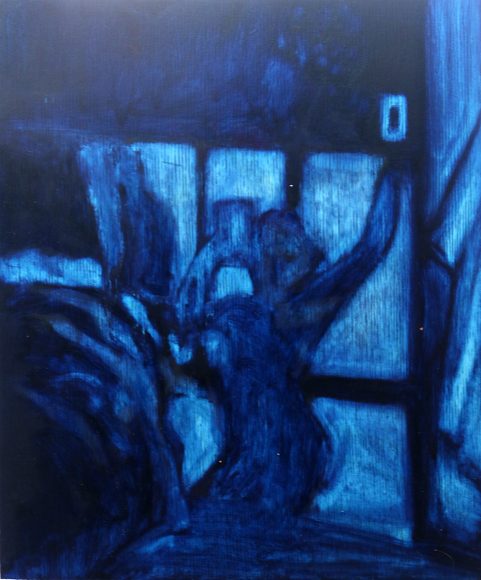
Souvenirs to Nowhere. 03 © Naghmeh Sharifi (Oil on Panel, 8″ x 10″), 2020, created as part of the Phi Centre’s Parallel Lines Virtual Residency
Conceptual self-portraits
At the beginning of the pandemic, when exhibitions, art classes and cultural events were cancelled, there was the question of what was essential, a feeling of irrelevance. “Does what I do matter? How much does it matter? Does it even mean anything?” Naghmeh would ask herself. Like everyone else, she struggled with productivity and even a sense of purpose, but the residency helped by providing some context and structure to her work.
As an artist, though, it was crucial not to fall into the trap of a themed or dated assignment. Her work has always focused on the place of the body in the world, and as the world became smaller, the body as inhabited space became bigger.
“In light of the current pandemic,” she writes, “my initial investigation into transforming notions of nostalgia has become a self-identification with the spaces I am restricted to. These images record the instances of confinement such as isolation, anxiety and self-care.”
This series, then, is a lot about discovering different ways of inhabiting and reimagining domestic spaces and daily objects. The lamp that looks down at her, the overflowing ashtray or the change of the seasons outside are thus reframed as conceptual self-portraits.
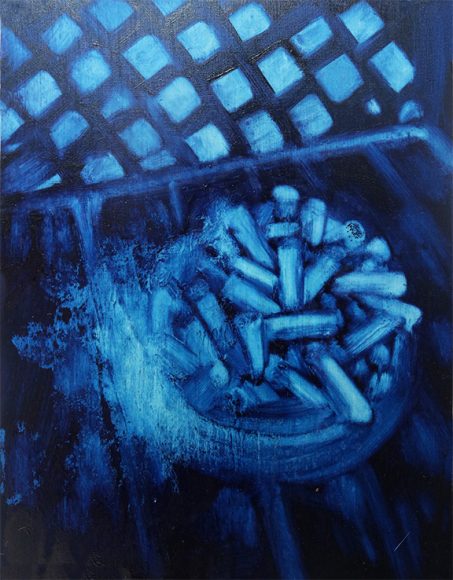
Souvenirs to Nowhere. 16 © Naghmeh Sharifi (Oil on Panel, 8″ x 10″), 2020, created as part of the Phi Centre’s Parallel Lines Virtual Residency
The colour of faraway places
These paintings are part of an existing body of work in which Naghmeh uses the colour blue as “a measure of distance” and focuses on themes of memory and disappearance.
Naghmeh’s initial choice of blue for these monochromatic paintings is due to the vibrancy that this specific colour exudes. However, her parallel readings of Rebecca Solnit’s book A Field Guide to Getting Lost provide more context for the scientific notions and psychological affects of blue as the perceived “colour of faraway” and of nostalgia.

Souvenirs to Nowhere. 13 © Naghmeh Sharifi (Oil on Panel, 8″ x 10″), 2020, created as part of the Phi Centre’s Parallel Lines Virtual Residency
Snapshots of nowhere
Rather than painting through layering, Naghmeh’s technique consists of wiping the paint off: “Through removal and erasure of the paint from the surface of the canvas initially covered in blue, the final imagery appears as the result of an uncovering.”
Naghmeh likens this process to photography. There are echoes of developing photo negatives, the tension between positive and negative space, and all that lies in between, for sure.
But beyond the technique itself, these paintings “provide a collective album of souvenirs to nowhere.” People take pictures of mundane things to make albums, she says. So in this case, her canvases can be considered allusions to having to stay put.
This is how a moment in the bathroom turned into a reflection on hair, on how such a beautiful thing can be grotesque at the same time.
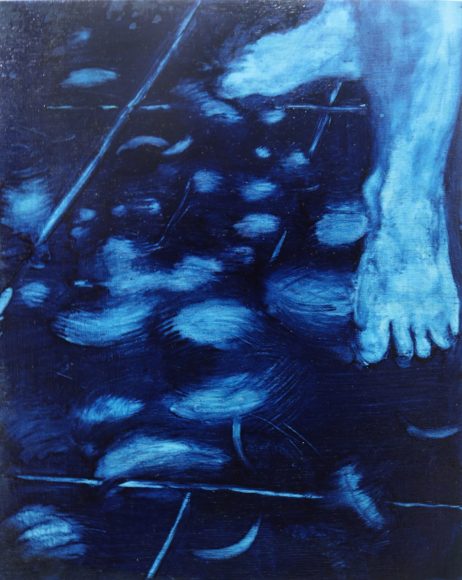
Souvenirs to Nowhere. 14 © Naghmeh Sharifi (Oil on Panel, 8″ x 10″), 2020, created as part of the Phi Centre’s Parallel Lines Virtual Residency
A painting is not a display of pixels
“I don’t count video as interaction. I don’t feed on people’s energies in video calls,” states Naghmeh, unsurprisingly.
Regarding the experience of showing her work online, she says that in a way, she feels it is more accessible to the world at large. And indeed, as an immigrant, this way of recording her work and her creative process has given her twin sister in Germany the same experience as somebody who lives next door.
Her paintings, however, don’t photograph well enough to do justice to the effect of her work when seen in a physical space. But even if they did, once a painting becomes a cluster of pixels, identical in various ways to so many other images that flood our screens, does it make sense to expect the same kind of commitment from viewers as from those who actually attend an exhibit? Or does it all become almost generic, swipeable content that people “flip through” rather than experience?

Souvenirs to Nowhere. 02 © Naghmeh Sharifi (Oil on Panel, 8” x 10”), 2020, created as part of the Phi Centre’s Parallel Lines Virtual Residency
In her current body of work, time is marked and given material expression by the light and the way it moves inside the apartment. The paintings are not displayed chronologically, but a keen observer can tell which was created in winter and which in summer, offering a visual calendar of sorts that shows the passage of time. It reminds us, perhaps, that this moment too shall pass, and we will be able to coexist differently.









